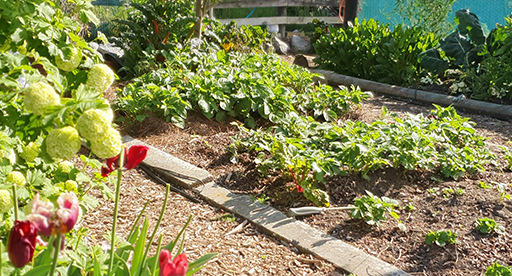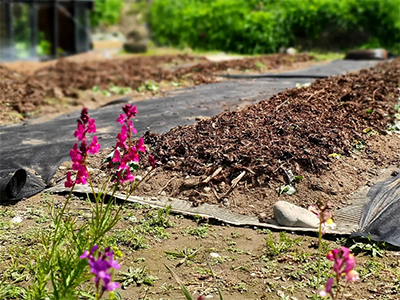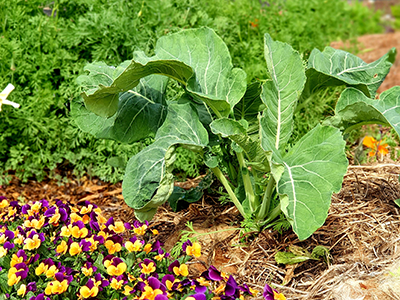
There are many benefits to a no dig garden, the main (and the reason a lot of gardeners are hanging up their garden fork) is for improved soil health.
Article by: Candy
Location: Riverside organic garden Canterbury
Follow me: @nzgardener
Why no-dig?
Did you know the best soil on most farms is found in the fence row, where no digging occurs. The saying, don't feed your plants feed your soil comes to mind, and it's all about the soil. By not disturbing our little soil microbiomes by digging them over they reward us by aerating, fertilizing and naturally creating a healthier growing medium for us. Water retention and soil erosion are also high on the list of reasons not to dig, and increased food yields and disease & pest resistance top it off. Are you convinced yet?
How do you start?
If you already have an existing garden bed you'll want to start by adding a layer of compost prior to planting, and not digging it in (hard to start with I know, but you'll reap the rewards soon enough). I definitely recommend looking at making your own organic compost if possible, from there on it's a matter of keeping your garden beds covered 100% of the time with planting food, flowers, cover crops or mulching. We don't want bare soil.
If you're creating a new no dig bed, do not weed spray the area first, get your hands on some cardboard or newspaper, lay it straight over the area you're wanting to grow in, wetting it down, and then start laying down organic material such as compost, dried leaves, seaweed, herbivore manure, straw, coffee grounds and grass clippings. My favorites are alpaca poo, willow leaves and riverweed as they are all free resources I have around me. You might find you have more resources around you then you think when you start looking.
Aiming for approx. 30cms tall, you want to layer a good mix of browns and greens (listed above organic materials) ending in a top layer of compost to plant in, or mulch if you're not planting in it straight away.
Although I'm still in the habit of digging over my carrot bed before planting, any vegetable, fruit or flower would be more then happy in a no dig bed. I hope you give it a try!


Post a comment
Candy's No Dig Garden Comments
2 years ago I put a tin frame out on a patch of lawn covered it inside with N/paper put layer of mulch then leaves and topped with compost I had made. Never looked back . When vegies finished general fert. and more compost then plant again.
Ash Taylor
I did this for a couple of years and then my garden started to fail miserably. Discovered that every tree in the area had sent its roots to get a free feed. Had to dig it all up to about 50cm depth and start again. Will try digging a trench around the perimeter each year in future.
John Williamson
I have clay soil and very dry over summer as live in Waipu so this type of gardening does appeal. Will this work
Liz Perales
Hi Liz, this will definitely work for clay soils. No dig gardens are a process that takes time, but you will reap the rewards. Use any organic matter you have available, especially compost, animal manure, grass clippings, seaweed, rotted hay, and straw - pea straw breaks down quicker than barley straw. If it is a new garden area put down layers of newspaper or cardboard and just keep layering until about 30cm high, you can then add compost to the top layer and plant directly into the bed. By creating a bed on top of your clay soil you will improve drainage so your plants won't be growing in waterlogged soils. This process helps break down the clay soil, the addition of gypsum will also speed up the composting process.
Lianne